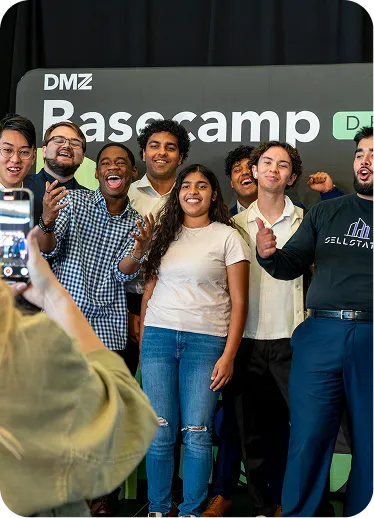"The minute you make a nurse's life easier is the minute you start to gain critical acclaim and support from that community."
Traditionally, doctors, nurses and health-care professionals working in wound care management have been forced to manually study and describe patients' wounds. This process is complicated by the fact that the wound itself can change rapidly and quick response and treatment is crucial to effective healing. As such, it is difficult for patients to get the care they can both trust and understand. Fortunately, one innovative company has found a way to simplify and improve wound care management. Founded in 2015, Swift Medical aims to bring automation and standardization to visual health-care assessments on a global basis. Their latest product, Swift Wound, allows doctors, nurses and patients to easily measure and assess chronic wounds using their smartphone. Using a phone's camera, users can scan a wound and the Swift Wound app will detect and capture an image of the wound as well as measure the wound and provide details on its size, dimensions and shape. With additional assessments, users can visually and numerically examine exactly how the wound is changing over time. This information can then be viewed by a single user or team of users working within a medical facility.
"People could have these wounds for years and they would never go away," said Swift Medical's Founder, Carlo Perez. "It's a problem that just shouldn't be happening, and we're passionate about making a change."
But just how can technology, especially from within an app, actually improve wound care management - something that, until now, has been primarily a manual process?
"Ultimately, it means better care, faster care and more connected care," said Perez. "For the patient, the most important benefit is that the clinicians that you're interacting with actually know if you're healing or not. It's really scary to think that leading up until now they didn't know, or rather they didn't know in such a precise fashion."
Perez and his team come from both medical and non-medical backgrounds.
"I think where we came into the medical space, we actually came at it with engineering first and foremost," he explained. "We have clinical members on the team and we also have team members who have deep backgrounds inside of visioning and computer vision, and what we decided to do was apply that in as many ways as we could to various different challenges."
It started with dermatology and quickly transitioned into wound care, something they realized was a much bigger problem. In fact, Perez says that when they looked into the statistics "it was 40 per cent error from one measurement to the next on average."
With this knowledge and unsolved challenge in front of them, Perez says, "We had the skills and background to be able to solve it, and we had a clinical team that was absolutely insanely passionate about it and had been working on this for years." The rest was history.
Now, Swift operates within a software as a service (SaaS) model - per-bed or per-practitioner, per-day, depending on whether it is being used in an in- or outpatient setting.
Current projections have Swift being used in thousands of facilities by the end of the year. Evidently, doctors, nurses, health-care professionals and their patients have recognized the benefits of Swift.
Looking forward, Swift Medical is in talks to enter into several exciting partnerships - including a recently announced relationship with leading North American electronic health record (EHR) provider, PointClickCare, powering their Skin and Wound app - and will also be introducing new technology to the Swift platform. In other words, this is just the beginning.
"We recently did a stage demo and had 1,500 nurses standing and clapping for what they were seeing on stage," Perez said. "I think by and large Swift's been received incredibly well and I think ultimately it comes down to the fact that this has been hard for them to do forever and now they can do it with not a $25,000 device but the smartphone in their pocket."


.webp)




